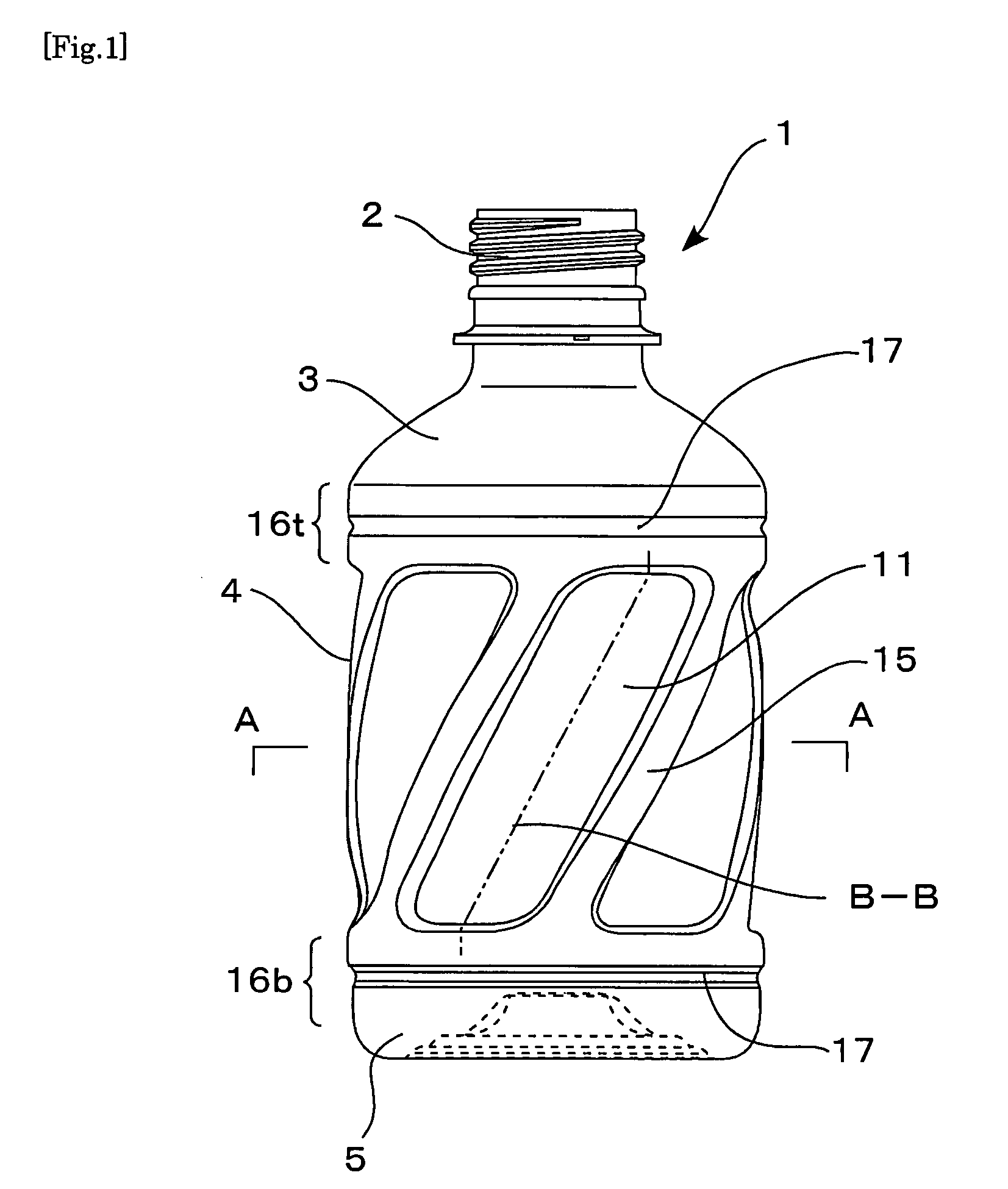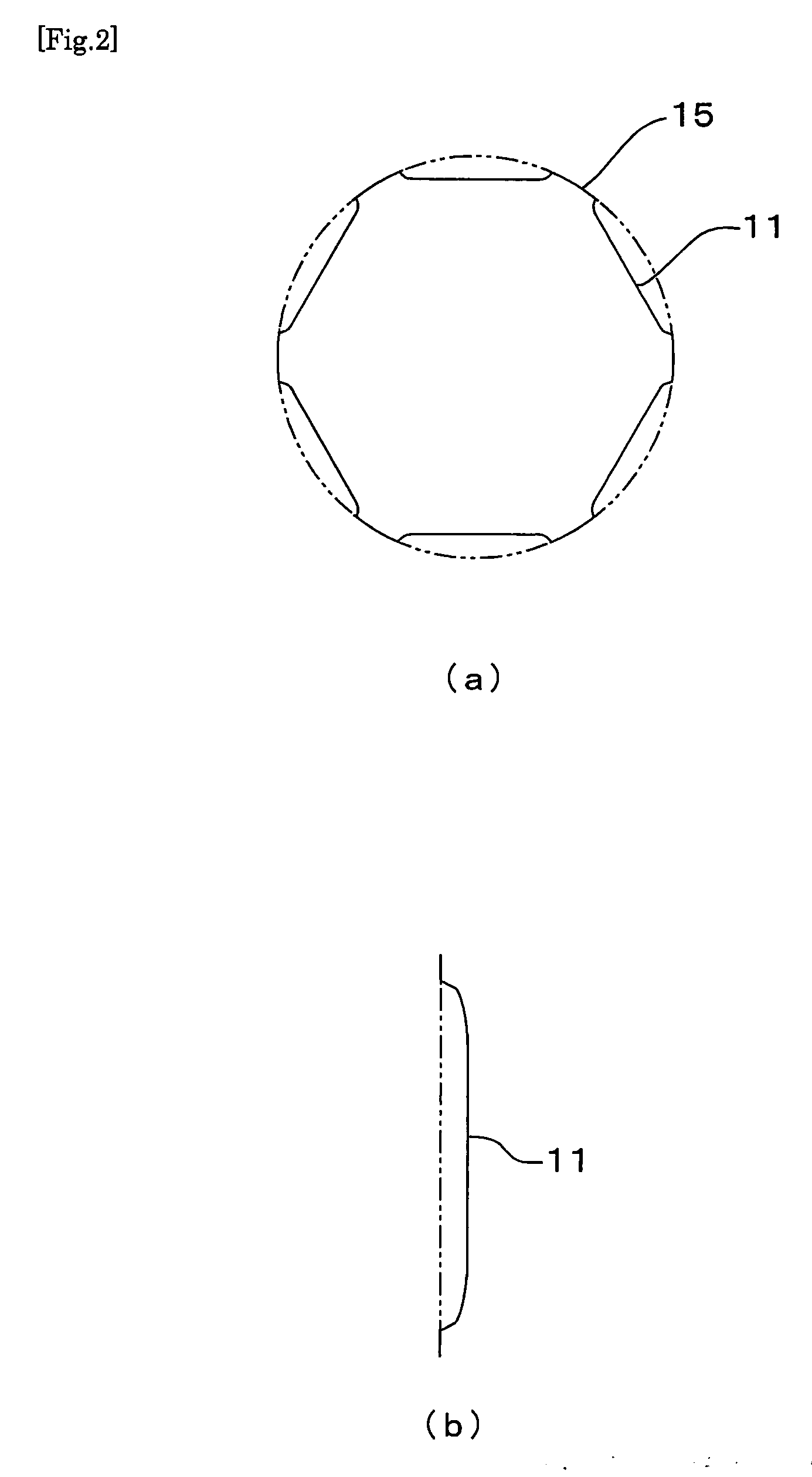Synthetic resin bottle
a technology of synthetic resin and bottle, applied in the field of synthetic resin bottles, can solve the problems of large design problems of bottle bottles, difficult to secure satisfactorily both the vacuum-absorbing function of vacuum-absorbing panels and the rigidity of bottles, and achieve the effects of reducing design restrictions, reducing the risk of bottle deformation, and improving rigidity and strength in the lateral direction
- Summary
- Abstract
- Description
- Claims
- Application Information
AI Technical Summary
Benefits of technology
Problems solved by technology
Method used
Image
Examples
Embodiment Construction
[0072]This invention is further described with respect to preferred embodiments, now referring to the drawings. FIGS. 1-3 show the synthetic resin bottle in one embodiment of this invention. FIG. 1 is a front elevational view of the bottle. FIG. 2(a) is a cross-sectional view of the bottle taken from line A-A in FIG. 1, and FIG. 2(b) is a vertical section of a later-described vacuum-absorbing panel 11 taken along line B-B, showing its dented shape. The bottle 1 is s biaxially drawn, blow molded product made of a PET resin. It is a small round bottle comprising a neck 2, a shoulder 3, a body 4, and a bottom 5, and the body 4 has a nominal capacity of 280 ml. The bottle has a total height of 132 mm, a maximum diameter Do of 66 mm, and a weight of 19 g.
[0073]Six vacuum-absorbing panels 11 are an embodiment of dented panels, and are formed by denting portions of cylindrical wall of the body 4 in a certain height range of the body 4. These panels are roughly flat plates and are in the sh...
PUM
 Login to View More
Login to View More Abstract
Description
Claims
Application Information
 Login to View More
Login to View More - R&D
- Intellectual Property
- Life Sciences
- Materials
- Tech Scout
- Unparalleled Data Quality
- Higher Quality Content
- 60% Fewer Hallucinations
Browse by: Latest US Patents, China's latest patents, Technical Efficacy Thesaurus, Application Domain, Technology Topic, Popular Technical Reports.
© 2025 PatSnap. All rights reserved.Legal|Privacy policy|Modern Slavery Act Transparency Statement|Sitemap|About US| Contact US: help@patsnap.com



